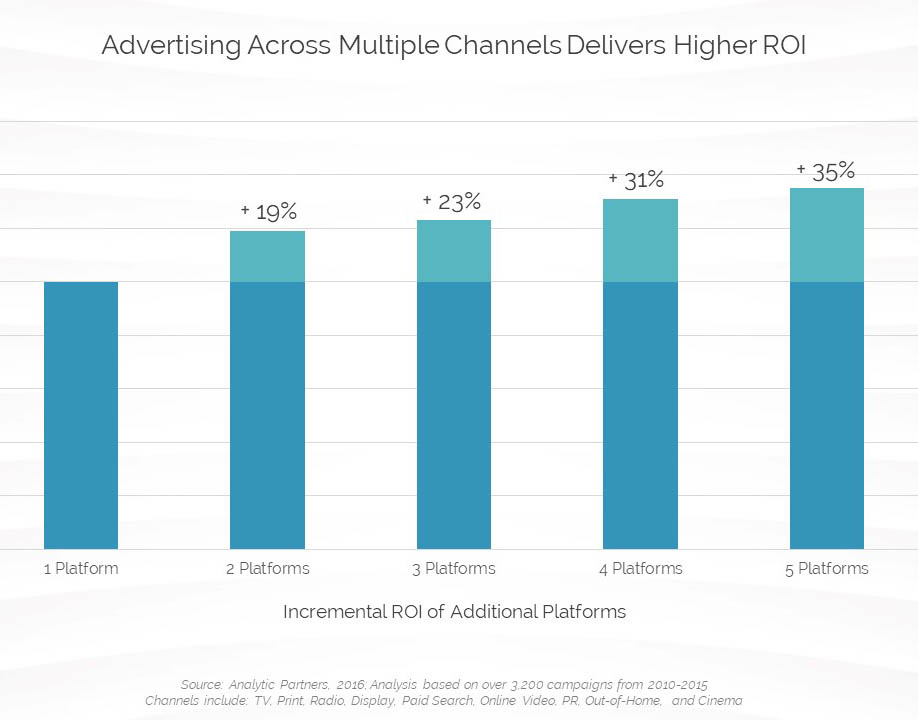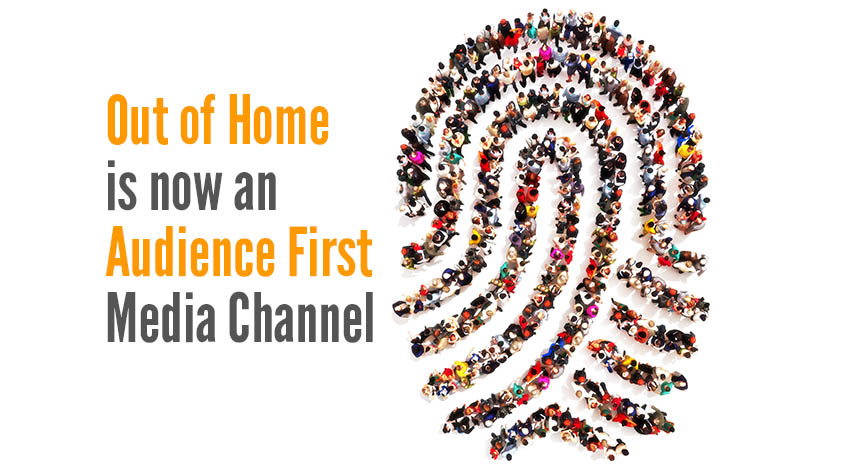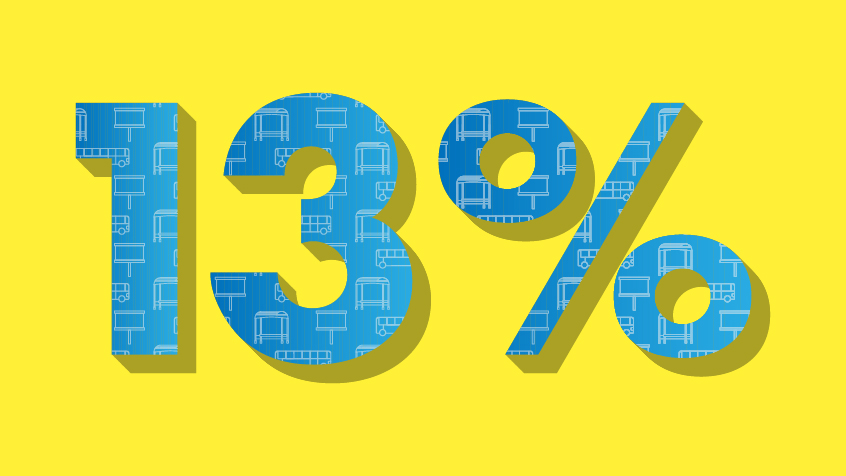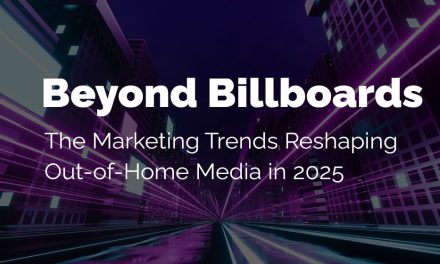OOH Welcomes a New Era in Audience-First Media
For years, Out of Home stood separate from almost all other advertising media, in terms of audience targeting capabilities and physical ad space. Until recently, we always saw the likes of TV, radio, and digital advertising that could reach audiences segmented in any manner of ways. However, Out of Home is finding new light as an audience-first format, wherein planning starts with the audience as the basis, well before media decisions are made.
When it comes to audience targeting, Out of Home is fairly new to the game, which has proven an advantage as it’s been able to observe and reconstruct the successes seen in other media. So now that OOH technology and it’s use of big data have been brought up to speed, it’s a higher-powered ad media than ever before.
You see, where old OOH planning methods began as a matter of picking specific pieces of media, typically based on sheer volume of impressions—a billboard along a busy street or a transit shelter in a downtown area—the process now begins with a focus on measurable audience data that helps us determine who the audience is: behavioral interests, tendencies, where they go, what they do, etc.

Media that Delivers Audiences
It’s the recent and rapid development of Out of Home technology that is making this all possible, especially audience metrics platforms, like Geopath Insights. These platforms allow advertisers to segment and slice audiences and be a resource to help advertisers think more deeply about the ways they can define audiences.
This data can be used to make determinations about changes in audience behaviors, which is especially useful today as we’re in the midst of the pandemic and preparing to emerge from quarantine. Audience metric platforms let us dig into an audience’s daily journey, changes in personal and professional lifestyle choices, how much time is spent out of the home, and how is time in the home being spent.
Planning from an Audience First Perspective
Before any media decisions are made, it’s important to first establish an audience and assess their behavioral profile. This information will affect what media is chosen. For instance, answering questions like, “Does your audience ride the train, or are they more likely to commute? Do they shop at Whole Foods or Aldi? Do they go to country music festivals or chess tournaments?” are all characteristics available to us. These can then be translated into both potential media choices, as well as overlaid on a market geography.
The advantage of planning Out of Home based on audience metrics is that planners can take those metrics and see how they relate to what is already known about the geography and media locations within a market. That means, determinations can be made about whether media previously assumed to reach an audience is actually seen by those people and whether media choices will actually deliver on campaign KPIs.
In addition, it’s critical that advertisers get in the habit of sharing campaign metrics and performance with OOH planners. As planners, we plan with the belief that large format, high-impact units located where a large portion of the consumer base lives works well for brand loyalty, and that targeting areas with limited consumer base works well to grow awareness. It’s the client-shared data on performance and goals, down to neighborhoods and zip codes, that will allow planners to connect creative and media to real success metrics.
Integration with Other Media
An audience-first approach allows Out of Home to be more effectively integrated with other media channels. The issue of integration was a pervasive one that OOH has overcome in a big way. Since advertising in most other media is planned based on audiences, and with the increased use of digital media by consumers—CTV and streaming audio platforms, in particular—OOH needed to catch up.
For instance, studies have shown that integrated, cross-channel campaigns yield better ROI, especially when the number of channels is compounded to reach audiences across a handful of media.

Programmatic Digital Out of Home (pDOOH) is the shining star of an OOH media that is audience-first. By definition, pDOOH is audience focused as it is planned by its ability to reach target audiences, not by media type or location. This allows for enormous creative flexibility and dynamic creative, in which messaging can be optimized for the right audience, right place, and right time. We’ve seen this capabilities set as a valuable application for retail-tagged creative that needs to be adjusted for specific audiences and account for store locations.
Reaching Audiences in a Post-COVID World
Depending on which pundit you read either everything will totally change forever, or everything will go back to exactly the way it was. The truth is we’ll probably end up somewhere in the middle. We’ve seen some dramatic shifts in out of home behaviors and travel patterns during the COVID crisis. While those will probably not become the new normal, it’s fairly safe to assume that we will see shifts in travel patterns remain.
The hard reality is, we may be in for a prolonged recession after the emergent health crisis has cleared up. Brands will need to be very careful with every dollar they spend, which means they will need to be hyper-focused on efficiently delivering the right messaging to the right audience.
An audience-first approach will become more important than ever. Above all, marketers will need to facilitate smarter, more effective reach strategies by segmenting their audience and planning, buying and delivering messages accordingly. Sample segments might include loyal customers, lapsed customers, growth potential, segments where physical behavior has shifted.
It will also be critical for brands to craft the right post-COVID messaging, which needs to be tasteful, relevant, helpful and balanced with the times. A special focus on audience-first messaging—dynamic content, engaging specific segments of consumers with relevant messaging, less reliance on market wide messaging, accounting for staggered markets opening back up—will all help to avoid messaging faux pas. Not everyone is dealing with the health crisis the same way, and it’s crucial that a brand’s advertising recognizes how one segment or community might differ from another.
Out of Home has seen immense change in recent years to become an audience-first media. This change, which has come by way of new technology and audience metric platforms, makes it a valuable tactic for brands looking to reach people with relevance and efficiency.
Most importantly, this newfound approach has revolutionized OOH planning for the better and made it advantageous as a flexible, more easily integrated media option, especially when it’s more important than ever to reach audiences in meaningful ways.





